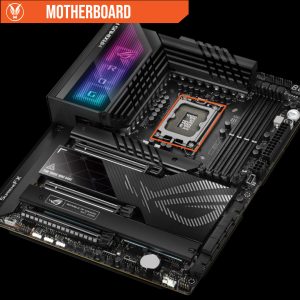How to check for CPU cooler compatibility
This form is protected by reCAPTCHA - the Google Privacy Policy and Terms of Service apply.
Don't have an account?
Creating an account has many benefits: check out faster, keep more than one address, track orders and more.
A CPU Cooler is a hardware component that will draw heat away from your processor and other components and redistribute it away from the hardware. CPU coolers can come in all shapes and sizes and will normally be in the form of an Air Cooler or a Liquid Cooler.
For the most part, all modern coolers will be compatible with the vast majority of AMD and Intel processors, but there are some things to consider when looking into CPU cooling compatibility, which we will cover below.
Are all CPU coolers compatible with all CPU’S?
Due to motherboard sockets changing over the years, older CPU coolers may not have the correct mounting hardware for current processors, which means not all CPU coolers are compatible with all processors.
If your CPU cooler manufacturer doesn't make newer mounting hardware for your CPU cooler, or if your CPU socket isn’t listed on the compatibility list for the CPU cooler, then you more than likely need to purchase a new CPU cooler for your CPU.
How do I know what CPU cooler will fit?
There are a couple of things to consider mounting wise when it comes to choosing or installing your CPU cooler.
Socket Compatibility
As CPU’s changed their design over years, so did the sockets that they would be installed on your motherboard. This means that your older CPU cooler may not fit on your brand-new motherboard and CPU. Normally a CPU cooler will state within its instructions or product information what socket type it supports with its included mounting hardware, so you can compare this to the socket that your CPU uses.
Currently Intel uses socket LGA1700 for it’s 12th, 13th, and 14th Generation CPUs. Whilst AMD uses socket AM4 for it’s Ryzen 5000 Series and AM5 for it’s Ryzen 7000, 8000, and 9000 Generation CPUs.
The product specifications of a CPU cooler will state what socket it supports out-of-the-box, but there are exceptions when manufacturers make separate mounting hardware for a cooler model, so they can be installed on newer CPU sockets.
Clearance Compatibility
Another thing to consider will be the amount of room within your PC case and around your processor socket. Due to CPU coolers coming in all shapes and sizes, other components will need to be considered when mounting your CPU cooler.
Clearance compatibility for CPU coolers can be split up into 2 categories for Air Cooling and for All-In-One Liquid Cooling.
Air Cooling clearance requires the height of the air cooler to be equal to or smaller than the “CPU Cooler Height” compatibility of the PC case. If the heatsink of your CPU cooler is too tall, then you won’t be able to close the side panel of your PC case. You also need to ensure that your RAM isn’t too tall for it to obstruct the fan on the heatsink, or the heatsink itself.
All-In-One Liquid Cooling clearance requires the PC case to support the radiator that will be mounted within the system. An All-In-One Liquid Cooler’s radiator can normally be mounted at the front, top, and rear of the PC case. However, the specifications of the PC case will state where and what sizes radiators can be mounted.
What size cooler do I need for my CPU?
TDP (Thermal Design Power) is the maximum amount of heat defined by wattage that your processor will output when under load, so you need to ensure that your CPU cooler will provide sufficient cooling to prevent your processor from overheating or thermal throttling.
Therefore, you want to find out what Processor you have installed in your system by:
- Searching “System Information” within your Windows search
- To the right of “Processor” it will show you what processor is currently installed in your system.
Once you know what processor you have, we would suggest locating your processor information on the AMD or Intel manufacturer website, as it will show it's TDP rating. This can then be compared to the TDP Rating that is displayed on the CPU cooler information.
Due to higher end processors performing at a higher standard and therefore outputting more heat, these will require a more expensive / larger CPU cooler than compared to a lower end processor.
You also don’t want to go overboard and overspend on your CPU cooler, so a 240mm AIO CPU cooler isn’t required for a processor like the i5 12400F, which has a TDP rating of 65W. The stock intel cooler or a £15 - £30 air tower cooler will be more than sufficient.
If you’re looking for a brand-new CPU cooler for your system, then we have a range of Air Cooling and AIO Liquid Cooling options.

